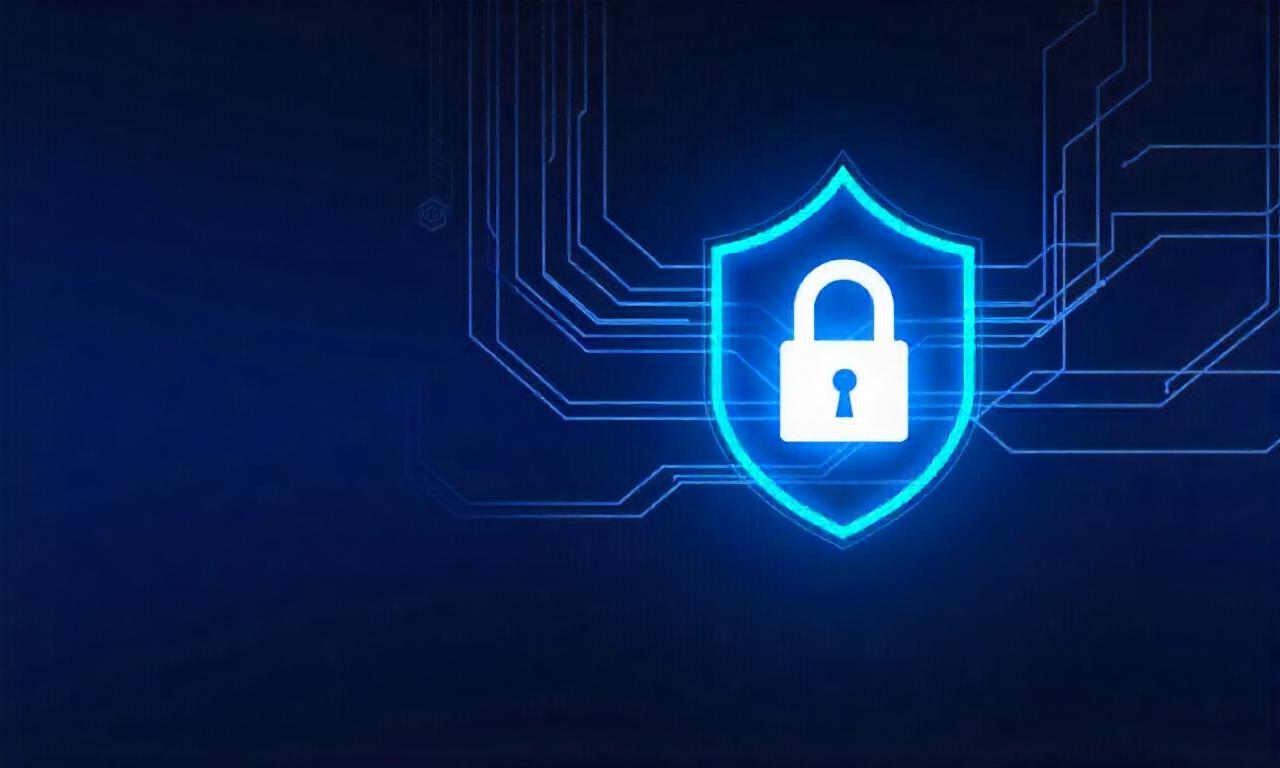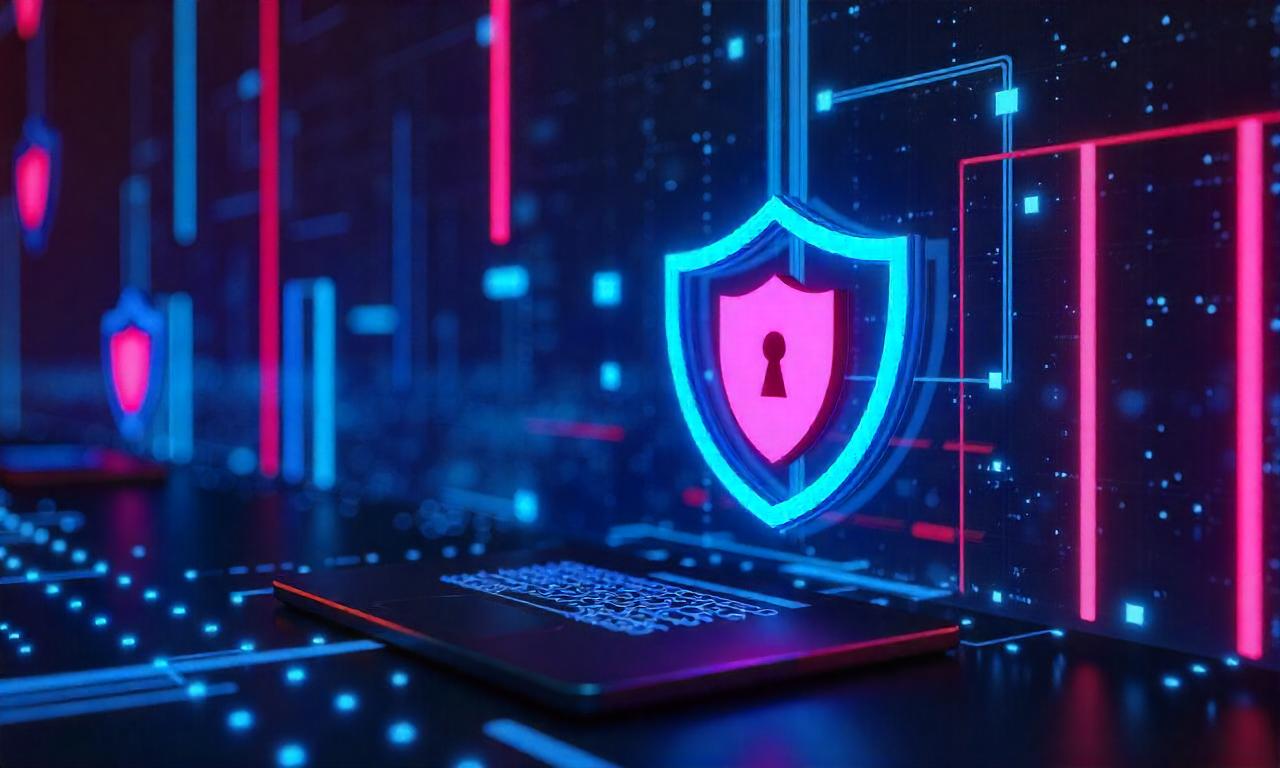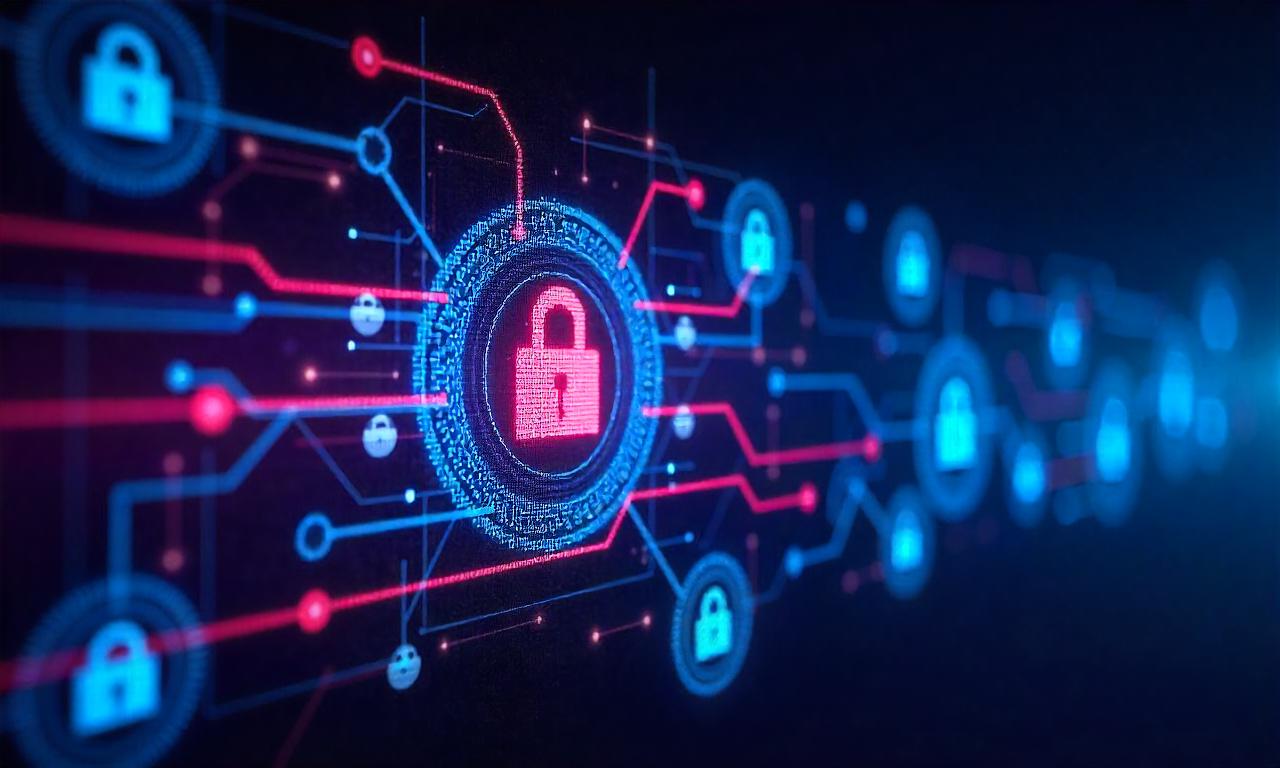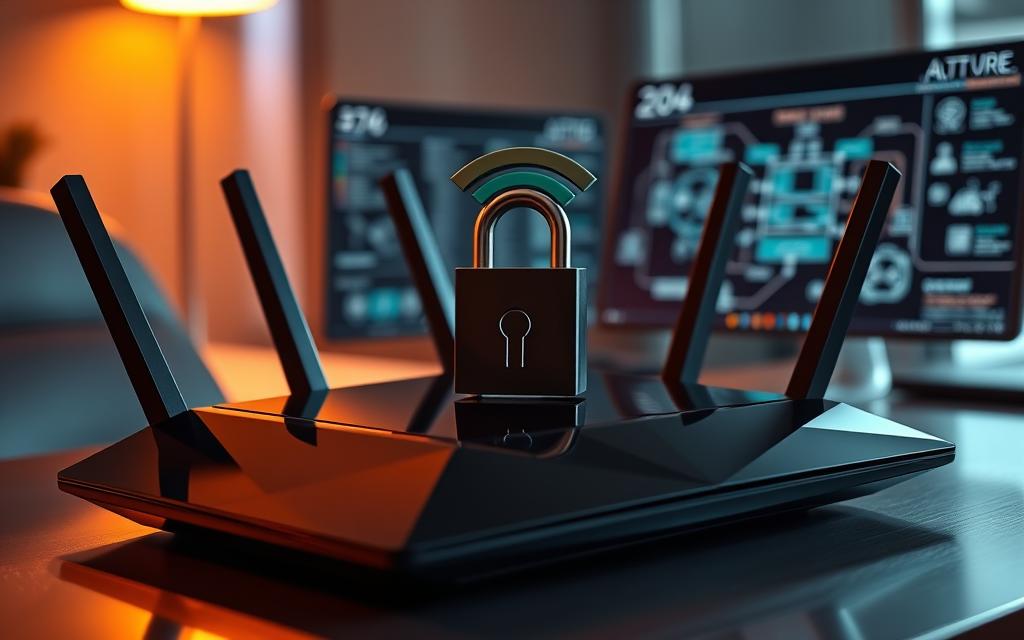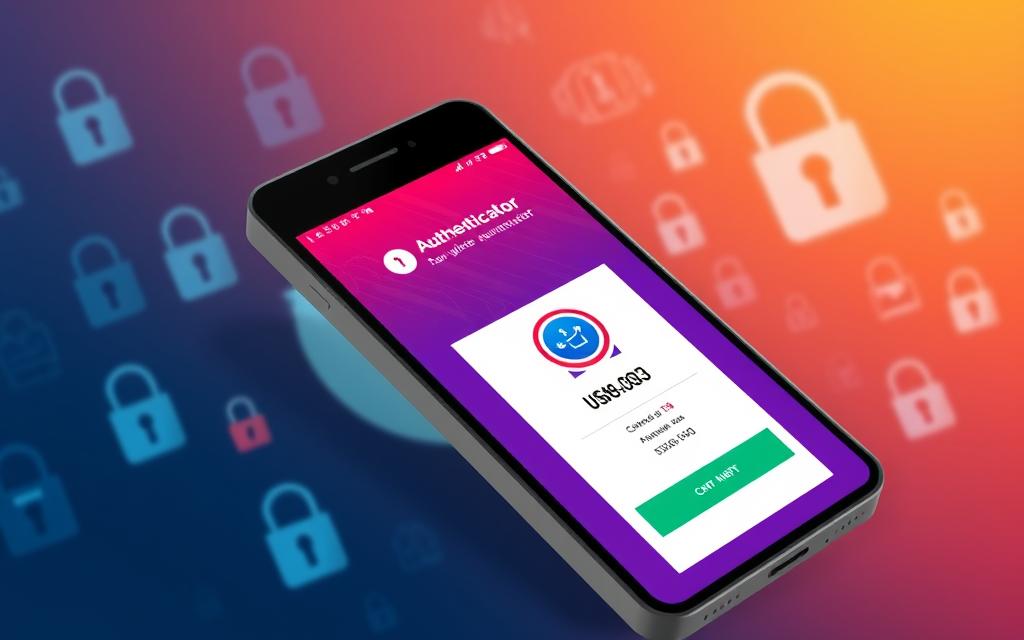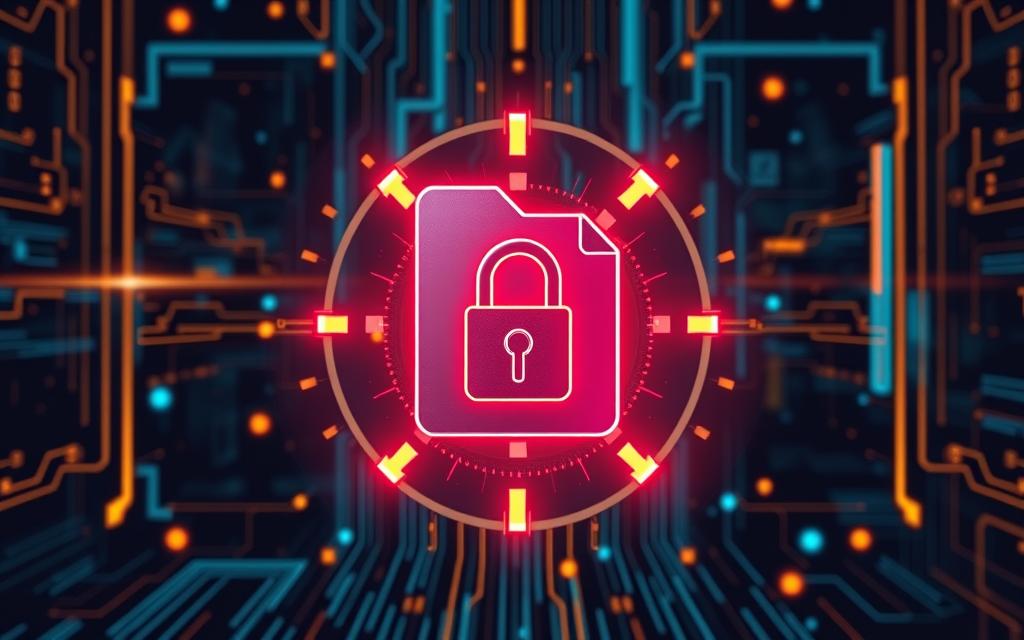Cybercrime is rising fast, and it’s set to cost the world over $24 trillion by 2027. The number of cyber attacks is growing, and they’re getting more complex and dangerous. As a business owner, I know that companies of all sizes face a big risk of cyber threats. In this article, I’ll cover the top 10 cybersecurity threats for 2024 and give you tips to stay safe.
Cybersecurity is a big worry for businesses today. With our growing use of technology, the threats keep changing, and staying updated is key. By knowing these top 10 threats and acting early, you can keep your business and its important assets safe from cyber attacks.
Table of Contents
ToggleSocial Engineering: The Human Element
In today’s digital world, threats go beyond just tech issues. Social engineering attacks trick people, not just computers. These attacks, like phishing, pretexting, and baiting, are sneaky and very effective.
Phishing Attacks: The Art of Deception
Phishing uses tricks to get people to share secrets or download harmful software. Criminals send fake emails or create fake websites that look real. They count on people’s trust and feelings to get past security checks.
Pretexting and Baiting: Exploiting Trust
Pretexting makes up a fake story to get people to share private info. Criminals pretend to be in charge, customers, or tech support. Baiting leaves infected USB drives hoping someone will plug them in and spread the malware.
To fight these attacks, we need to stay alert and learn about new tactics. We should use strong security steps that protect us beyond just tech. Understanding how people are tricked helps us defend against these threats.
Malware: The Persistent Threat
Malware is a big problem in the world of cybersecurity. It’s getting more complex and sneaky, making it hard to stop. We’re seeing more ransomware and fileless malware, which are big threats.
Ransomware: Holding Data Hostage
Ransomware is a big worry now. Hackers use it to lock up your files and ask for money to unlock them. This can really hurt businesses, hospitals, and even cities. It’s important to back up your data and have a plan to get it back if you get hit by ransomware.
Fileless Malware: The Stealthy Intruder
Fileless malware is a new worry. It doesn’t write to your hard drive but runs in your RAM instead. This makes it hard for old-school antivirus programs to catch. To fight this, you need a strong defense with the latest threat detection tools.
To beat these malware threats, companies need to keep checking their security and teach their teams about new hacker tricks. Being alert and taking action early is key to protecting against malware in the future.
| Malware Type | Description | Impact |
|---|---|---|
| Ransomware | Encrypts a victim’s files and demands a ransom payment for decryption | Can cripple businesses, healthcare institutions, and local governments |
| Fileless Malware | Leverages scripts or loaded modules into the RAM without writing to the disk, making it difficult to detect | Challenging for traditional antivirus solutions to identify and prevent |
Third-Party Exposure: A Weak Link
Cyber threats are getting more complex, and third-party cyber threats are a big worry. These threats happen when hackers go after networks that are not as strong. These networks often have access to the main target.
In early 2024, AT&T faced a huge data breach through a third party. This affected over 70 million customers. The stolen data included call and text records, passwords, and more. It showed how risky third-party cyber threats can be.
These attacks are scary because third parties often don’t have the same level of security as big companies. This makes them an easy target for hackers. They use these weak spots to get into the bigger, better-protected systems through supply chain attacks.
- Third-party cyber threats pose a significant risk to businesses and individuals alike.
- Supply chain attacks, where cybercriminals target less-secure third-party networks, are becoming increasingly common.
- Third-party data breaches, like the one experienced by AT&T, can have far-reaching consequences, exposing sensitive information and compromising trust.
As we depend more on third-party services, it’s key for companies to manage these risks well. They must make sure their whole network is safe from these threats.
Configuration Mistakes: Leaving the Door Open
Cyber security systems aim to protect our digital assets. But, even the best plans can fail because of simple mistakes. A recent report from Censys found over 8,000 servers were at risk because of misconfigurations. These errors can make it easy for cybercriminals to get in.
Default Settings: An Easy Target
Not changing device default settings is a common mistake. Many people, even experts, forget this important step. This leaves their systems open to attacks.
Default settings are often easy to guess, making them a target for hackers.
Weak Passwords: The Achilles’ Heel
Weak passwords are another big problem. Even though there’s a lot of advice on strong passwords, many still use easy-to-guess ones. This weakens the security of their systems.
Weak passwords can let hackers in, leading to more security issues.
To avoid these mistakes, we need to be careful and use strong security steps. Keeping software updated, using strong passwords, and segmenting networks can help protect your systems from unauthorized access.
top 10 cyber security threats
In the world of cybersecurity, it’s key for businesses to know the main threats. These threats range from social engineering to attacks from other countries. Understanding these risks helps in making strong defense plans for 2024.
Here are the top 10 cyber security threats we’ll cover:
- Social Engineering: This is when people are tricked into giving away sensitive info.
- Malware: This is harmful software that can harm your systems.
- Third-Party Exposure: This happens when partners or vendors bring in risks.
- Configuration Mistakes: These are errors in setting up systems that attackers can use.
- AI-Powered Attacks: These use artificial intelligence to make cyber attacks bigger and more efficient.
- DNS Tunneling: This is a way to secretly talk to others over the Domain Name System.
- Insider Threats: These are risks from people inside the company, either on purpose or by mistake.
- State-Sponsored Attacks: These are very complex cyber attacks backed by governments.
Knowing about these threats and how to defend against them is vital for all businesses. It helps keep digital assets safe and keeps operations running smoothly. By staying alert and informed, companies can handle the changing cyber risks better.
Artificial Intelligence: A Double-Edged Sword
AI has changed the way we think about cybersecurity. It brings both new chances and big challenges. Cybercriminals use AI to attack faster and smarter. But, AI also helps us by making cybersecurity stronger.
AI-Powered Attacks: The New Frontier
Cybercriminals have learned to use AI to make their attacks better. AI helps malware find and attack weak spots quickly. A recent survey found 85% of cybersecurity experts link more cyberattacks to AI.
AI-Driven Defense: The Countermeasure
But, the cybersecurity world has also turned to AI for help. AI can look at lots of data, find strange patterns, and act fast. This makes it easier for companies to fight off AI attacks.
The fight between AI attacks and AI defenses is ongoing. It’s clear that AI will greatly shape the future of cybersecurity.
DNS Tunneling: A Stealthy Gateway
The digital world is getting more complex, and so are the threats to our networks. One sneaky threat is DNS tunneling. It lets cybercriminals hide their bad activities by blending them with normal website requests. This makes DNS tunneling, hidden data transfers, and other network security threats hard to spot.
The domain name system (DNS) turns website names into IP addresses, helping us get around the internet. Firewalls often let DNS traffic through, thinking it’s safe. But, cybercriminals sneak their bad data into DNS requests, avoiding detection.
DNS tunneling helps hackers steal data, set up secret channels, and get past filters or firewalls. It’s hard to catch because it looks like normal DNS traffic. This makes it a powerful tool for attackers, letting them hide their bad deeds.
| Threat | Impact | Mitigation Strategies |
|---|---|---|
| DNS Tunneling | Enables hidden data transfers, command-and-control channels, and bypassing of security controls |
|
To fight this threat, companies need to focus on network security. They should use a strong defense that includes DNS security. Knowing about DNS tunneling and how to stop it helps protect networks and data from hackers.
Insider Threats: The Enemy Within
Cyber security threats include many types, but insider threats are very worrying. An insider threat happens when someone trusted in an organization, like an employee or contractor, uses their access and knowledge to harm or steal sensitive info. These threats can be on purpose, where someone with ill intent does bad things, or by accident, where an employee makes a mistake that puts the organization at risk.
Intentional Threats: Malicious Insiders
Malicious insiders are a big risk for organizations. They might have a personal issue with their job, want money, or just like causing trouble. These people can take important data, mess with operations, or even ruin critical systems. It’s hard to catch and stop intentional insider threats because the person knows the organization’s security well.
Unintentional Threats: Human Error
While we worry about malicious insiders, the bigger threat is from unintentional insiders. These happen when employees, trying to do the right thing, accidentally share sensitive info or make the system vulnerable. For instance, an employee might fall for a phishing scam and share their login details, or leave a laptop in a public spot by mistake. To deal with these threats, we need to teach employees, have strong security rules, and watch closely.
To fight insider threats, companies need a strong cyber security plan that covers both tech and people. This could mean having rules for who can access what, stopping data from being lost, teaching employees about security, and checking for risks often. By being careful and tackling insider threats from different sides, businesses can protect themselves better from this ongoing and big problem.
| Type of Insider Threat | Description | Examples |
|---|---|---|
| Intentional Threats: Malicious Insiders | Trusted individuals who deliberately use their access and knowledge to cause harm or steal sensitive information. |
|
| Unintentional Threats: Human Error | Well-meaning employees who inadvertently expose sensitive information or introduce vulnerabilities into the system. |
|
State-Sponsored Attacks: The New Battleground
In the world of cyber security, state-sponsored attacks are a big worry. These attacks come from nation-states and are a new kind of fight in the world. They target important infrastructure, government agencies, and even private companies.
Reports from the NSA, FBI, and CISA highlight the threat of these attacks. For example, the Volt Typhoon group, linked to China, is hitting IT networks in the US. These attacks can lead to stolen information, disrupted services, and more.
These threats come from many reasons, like spying, spreading false information, or weakening a nation. Now, countries fight in the digital world too. They use cyber warfare to get ahead.
| Cyber Threat | Potential Impact | Recent Examples |
|---|---|---|
| State-sponsored cyber attacks |
|
|
We must stay alert and act fast against state-sponsored cyber threats. Knowing about these threats and using strong security helps protect us and our important assets from cyber warfare.

Conclusion
The world of cybersecurity is always changing. It’s filled with threats like social engineering and malware. Both businesses and individuals must stay alert to keep their digital stuff safe.
Using cybersecurity best practices is key. This means teaching employees about phishing and keeping networks secure. It’s also vital to keep up with new threats and use strong cyber risk mitigation strategies.
To win the fight against cyber threats, we need a strong, proactive cybersecurity plan. By learning about these threats and protecting our digital world, we can make a safer future for everyone.
FAQ
What are the top cybersecurity threats businesses face in 2024?
Businesses face threats like social engineering, malware, and third-party exposure. They also face risks from configuration mistakes, AI attacks, DNS tunneling, insider threats, and state-sponsored attacks.
How do social engineering attacks work and what can be done to prevent them?
Social engineering attacks trick people into giving away sensitive info or installing malware. They use phishing, spoofing, and baiting. Teaching employees to spot these tactics is key to stopping them.
What are the latest trends in malware and how can businesses protect against them?
Malware is getting more complex, with threats like ransomware and fileless malware hard to spot. Businesses can fight back by using strong antivirus software, keeping software updated, and backing up data regularly.
Why are third-party security breaches a growing concern, and how can businesses mitigate the risk?
Cybercriminals target third-party networks that give access to a business’s systems and data. Businesses can reduce risk by carefully checking vendors, setting strong access controls, and watching what third-parties do.
What are the most common configuration mistakes that leave businesses vulnerable, and how can they be addressed?
Mistakes like not changing default settings and poor network setup leave businesses open to attacks. Regularly checking and updating security settings and using strong passwords can help fix these issues.
How are AI-powered attacks impacting the cybersecurity landscape, and what can be done to defend against them?
AI attacks use machine learning to find and exploit security weaknesses fast. Businesses need to keep up with these threats by adapting their security measures and using AI for defense too.
What is DNS tunneling, and how can it be used by cyber criminals to bypass security measures?
DNS tunneling hides malicious data in normal website requests, fooling firewalls. Businesses can fight this by using strong DNS security and watching their network traffic closely.
What are the different types of insider threats, and how can businesses protect against them?
Insider threats can be intentional or accidental. To protect against them, businesses should control access tightly, train employees well, and use monitoring systems.
What are state-sponsored cyber attacks, and how can businesses and individuals protect themselves?
State-sponsored attacks aim to steal info, spread propaganda, or disrupt operations. Protecting against them means staying updated on threats, working with government agencies, and using strong cybersecurity steps.






